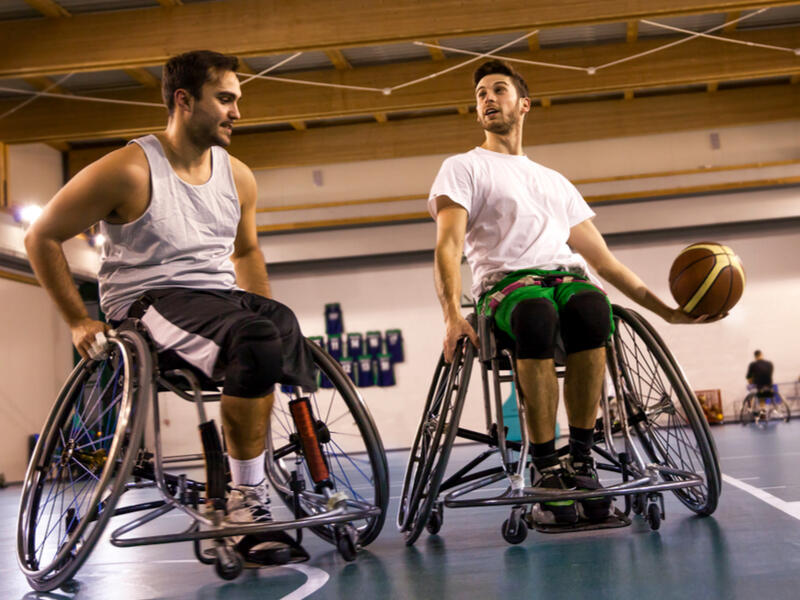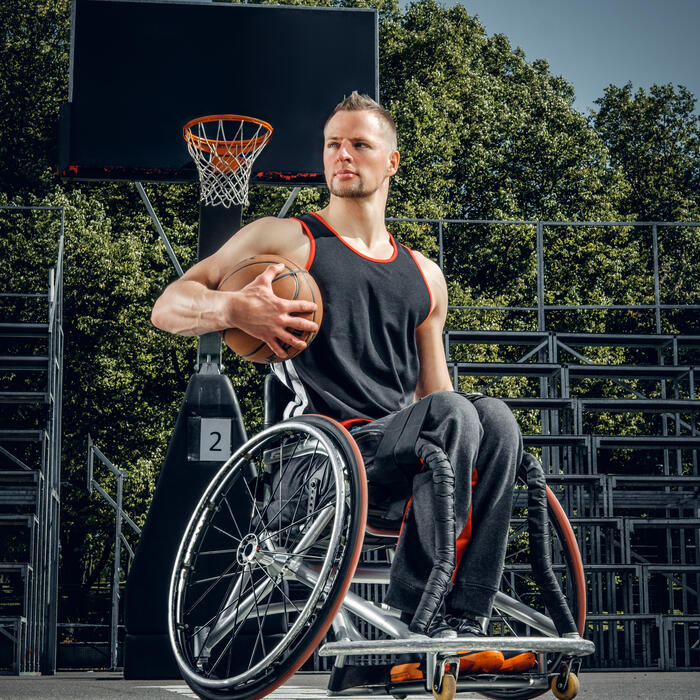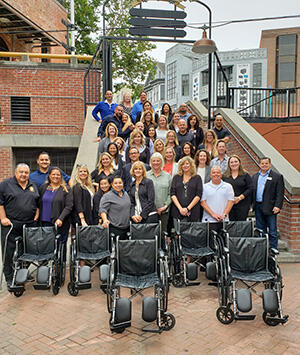Wheelcharity is truly the gift of champions for champions. That’s because these generous donors understand the power of wheelchair ownership. It’s almost impossible for most of us to fathom how wheelchairs transform lives.
Wheelchair champions
“On 29 July 1948, the day of the Opening Ceremony of the London 1948 Olympic Games, Dr. Guttmann organised the first competition for wheelchair athletes….” This was the start of what we now know as the Paralympic Games.
 “Paralympic” originates from 2 Greek words: para which means beside and the word Olympic, which refers to the ancient city of Olympia, home of the first games. [Oh, by the way, don’t confuse these games with the Special Olympics, which are for athletes with cognitive disabilities.]
“Paralympic” originates from 2 Greek words: para which means beside and the word Olympic, which refers to the ancient city of Olympia, home of the first games. [Oh, by the way, don’t confuse these games with the Special Olympics, which are for athletes with cognitive disabilities.]
Paralympics are for competitors with physical and visual disabilities and they are “parallel to or beside” the Olympic Games. And happily they are increasing in stature and popularity.According to Paralympic.org, the 1948 games involved 16 injured servicemen and women who took part in the archery competition. In 2021, more than 4,000 athletes vied for the gold. And those in wheelchairs competed in Rugby, Basketball, Curling, Archery, Shooting,Tennis and Table tennis, Fencing, Track and Field, Boccia!
 How wheelchairs transform lives: unlimited goals!
How wheelchairs transform lives: unlimited goals!
Let’s take a look at that list again: Rugby, Basketball, Curling, Archery, Shooting,Tennis and Table tennis, Fencing, Track and Field, Boccia. Each sport requires a different set of skills, and techniques—both mental and physical. And each develops different parts of the body, enhancing hand-eye coordination, speed, agility, and muscle-memory. And yet, because of their wheelchairs these Paralympic athletes can pursue the highest level of proficiency and master everything required to become champions. No limits to their dreams. And thanks to their wheelchairs, no physical boundaries.
 No wheelchair. No freedom!
No wheelchair. No freedom!
Two million—that’s the estimated number of new wheelchair users every year. And with the aging Baby Boomer population, that number will probably swell in the coming years. Sadly many of the disabled cannot afford one, which means they can’t go or see or do the things they want or need to do. Lack of mobility means a lack of personal freedom.
“Typical costs: A standard, manual wheelchair costs an average of $500, according to the Robert Wood Johnson Foundation… A chair meant for everyday use costs between $1,000 and $2,000 depending upon the features of the chair, which can include an individualized seat, various types of wheels and a lightweight frame,” according to health.costhelper.com. Of course, $500 isn’t really a lot of money, if you’ve got it. For those who can’t afford it, that’s a small fortune.
How Wheelcharity transforms lives
Low income families, the unemployed, underemployed, uninsured, and veterans on fixed incomes—these are the members of your community who need a wheelchair but simply don’t have the money.
 A Wheelcharity Team Building workshop could be a win win for you and your disabled neighbors. Corporate social responsibility always wins a lot of “cool points” in the community as well as your company. That is to say, your colleagues will bask in the glow of their positive corporate image, because kindness is both professionally and personally gratifying.
A Wheelcharity Team Building workshop could be a win win for you and your disabled neighbors. Corporate social responsibility always wins a lot of “cool points” in the community as well as your company. That is to say, your colleagues will bask in the glow of their positive corporate image, because kindness is both professionally and personally gratifying.
During the workshop your staff will divvy up into teams and “compete” with each other to assemble their wheelchair faster and more efficiently than the others. The assembly process itself requires clear communication and quick collaboration—attributes that build strong teams. And afterwards, each team wins the “race” because their wheelchair will be donated to a member of your community who needs it. Hospitals, social service agencies, and disabled veterans organizations are always in need of such gifts and will gratefully deliver yours to one of their constituents.
And the afterglow of success will linger among your staff as each envisions a newly mobile child whizzing up their street. Or perhaps they’ll picture a veteran who can go to the park now or even to the store. And, of course, a prospective Paralympian may begin their journey as a world class athlete—thanks to you.

